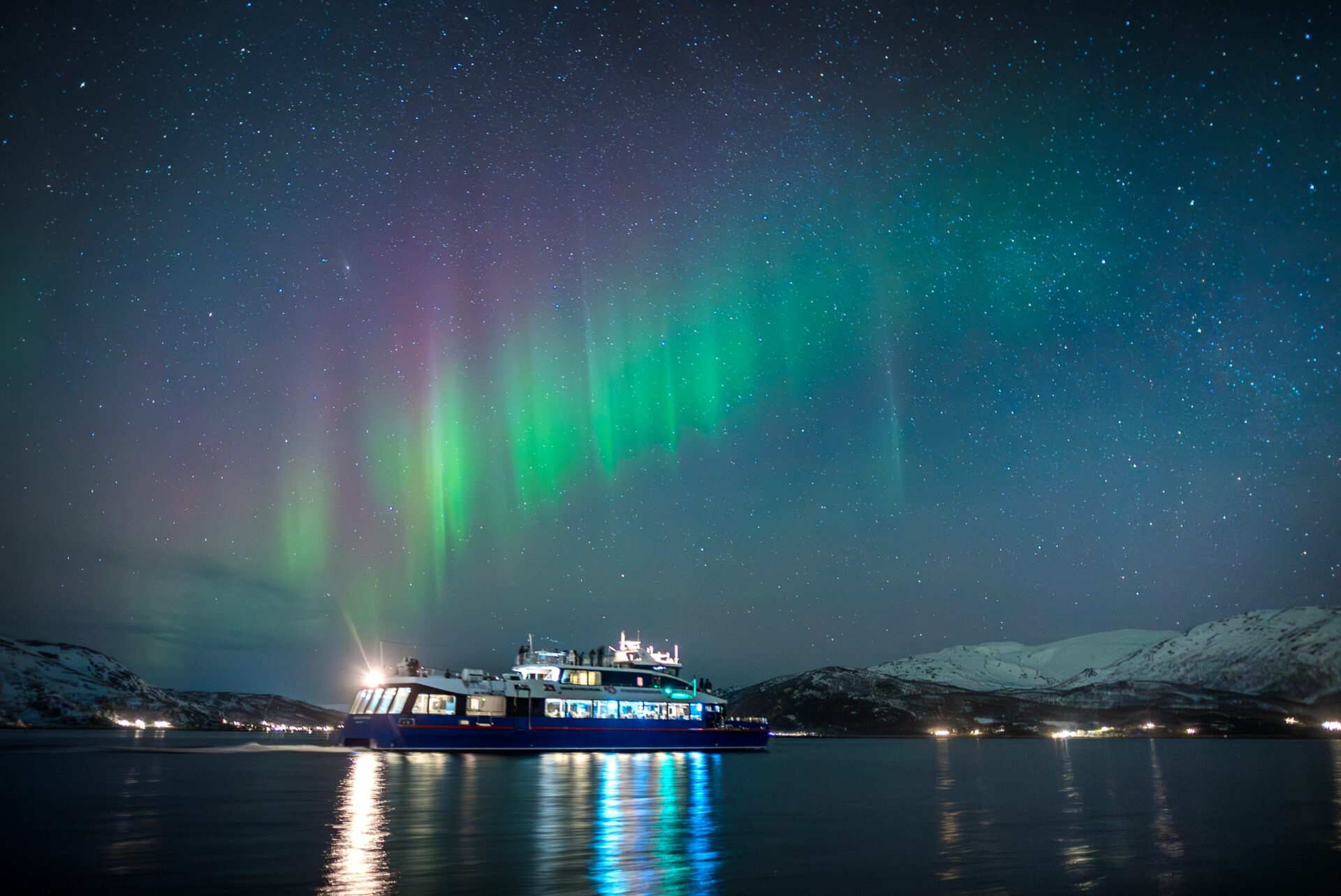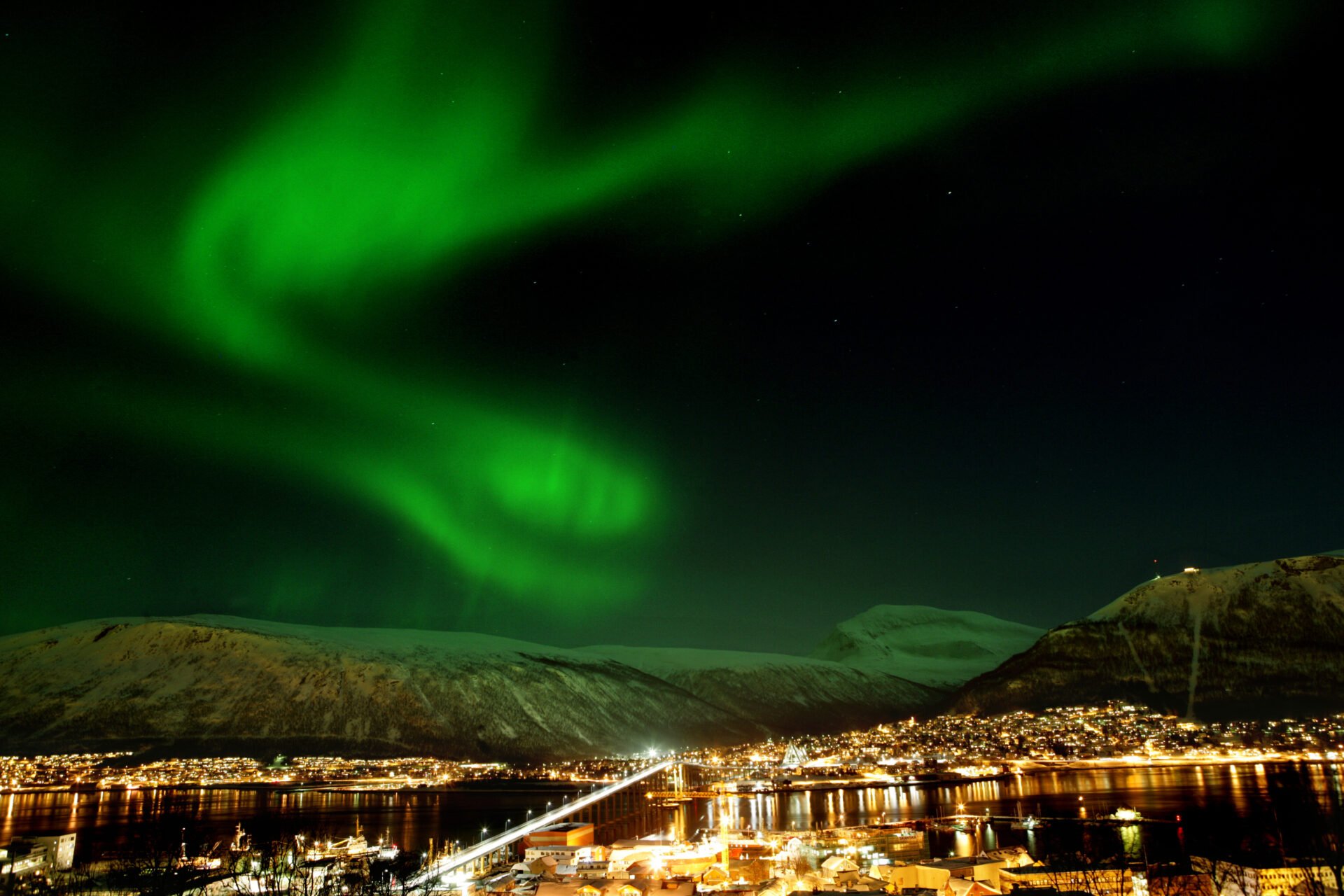Tromsø’s perfect location under the aurora oval
There is a reason why people from all over the world dream of visiting the Arctic city of Tromsø in winter. It has a unique location at 69° north, right below the aurora oval – an oval-shaped belt around Earth’s magnetic poles where the Northern Lights appear most frequently. This means Tromsø has some of the highest chances anywhere in the world to see the aurora borealis lighting up the night sky, often several nights a week in winter.
Located north of the Arctic Circle, Tromsø enjoys long, dark nights – ideal conditions for experiencing the aurora. At the same time, it’s an Arctic city that’s easy to reach, with a milder coastal climate than other Arctic cities thanks to the warm waters of the Gulf Stream, and quick access to untouched nature away from light pollution. All this makes Tromsø one of the world’s best places to experience the Northern Lights.
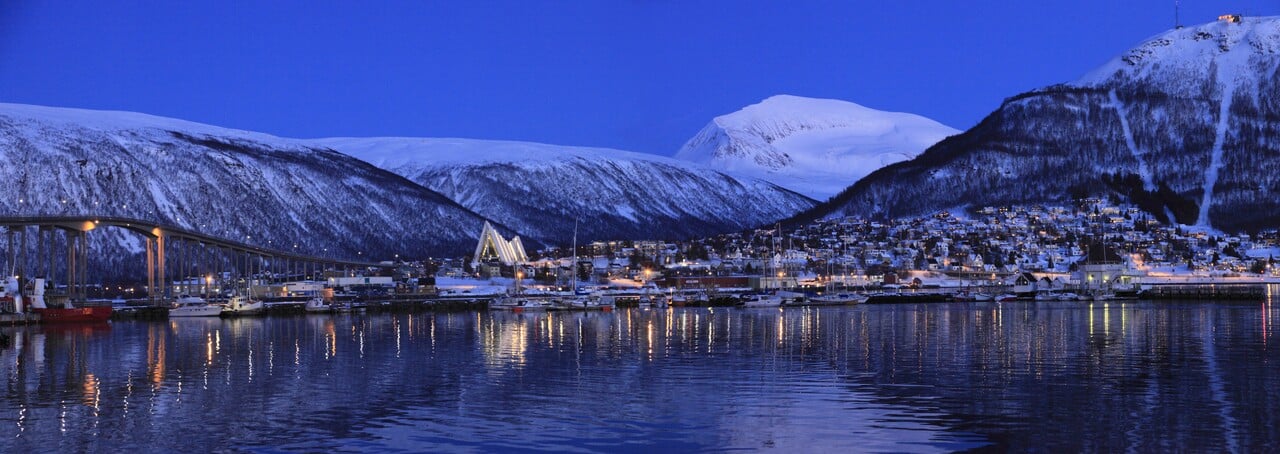
When is the best time to see the Northern Lights in Tromsø?
The best time to see the Northern Lights in Tromsø – and across Northern Norway – is from September to early April, when the nights are long and dark. To enjoy the aurora at its best, you need clear skies and dark viewing conditions.
Even though Tromsø has many long nights, clouds can block the view, so local guides often check forecasts and head for areas with open skies. The lights can appear at any time when the sky is dark, but they are most active between 21:00 and 01:00.
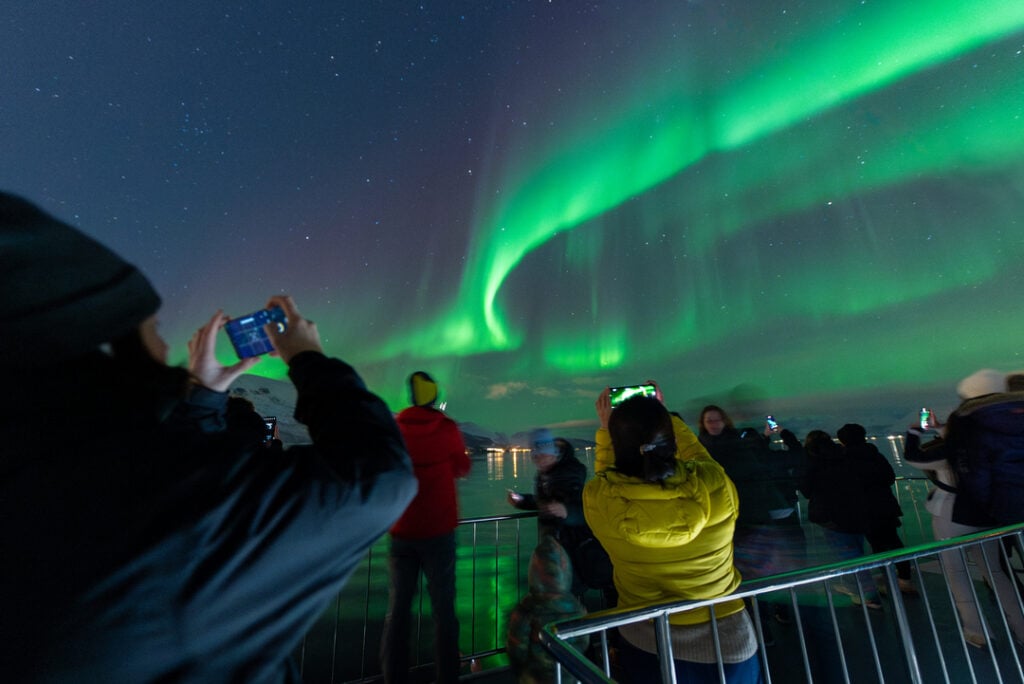
What are the Northern Lights?
The Northern Lights, also known as aurora borealis, are a natural light display caused by energy from the Sun.
When charged particles from the solar wind travel toward Earth, they are guided by its magnetic field into the upper atmosphere near the polar regions. There, they collide with gases such as oxygen and nitrogen. These gases consist of atoms and molecules that gain extra energy when they are hit by the incoming particles. As they release this energy and return to their normal state, it comes out as light, forming the colorful waves we see in the night sky.
The colors of the aurora depend on which gas is involved and how high the collisions occur:
- Green – the most common color, from oxygen around 100 kilometers above Earth.
- Red – from oxygen higher up in the atmosphere.
- Blue and purple – from nitrogen at lower altitudes.
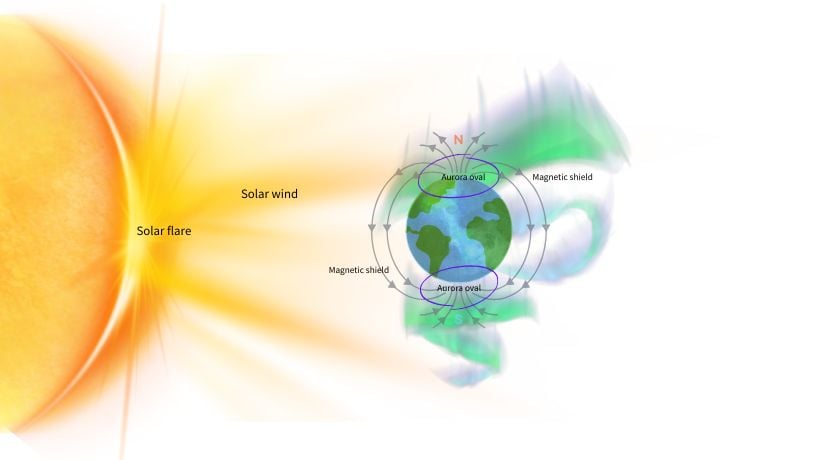
Life and culture under the Northern Lights
During the long winter nights, when darkness covers Tromsø for weeks, this is the time of year when colors make the sky come alive. The polar night is often called the season of colors. The snow glows deep blue during the “blue hour,” the sky turns shades of pink and orange when the sun hides below the horizon – and at night, the green aurora moves across the Arctic sky.
For centuries, the Northern Lights have inspired myths and superstition. The Vikings believed the lights were reflections from the armor and swords of the Valkyries, guiding fallen warriors to Odin. The Sami people, the Indigenous people of northern Scandinavia, saw the lights as spirits of the dead and treated them with deep respect. It was said that if you laughed, waved or whistled under the lights, they might come down and take you away. “Guovssahas válddii su”, they would say in Sami: the Northern Lights got him.
Today, the old stories are remembered as part of the Arctic heritage, while science helps us understand the phenomenon behind the magic. Knowing the science doesn’t make it any less magical – the Northern Lights remain one of nature’s most breathtaking wonders.
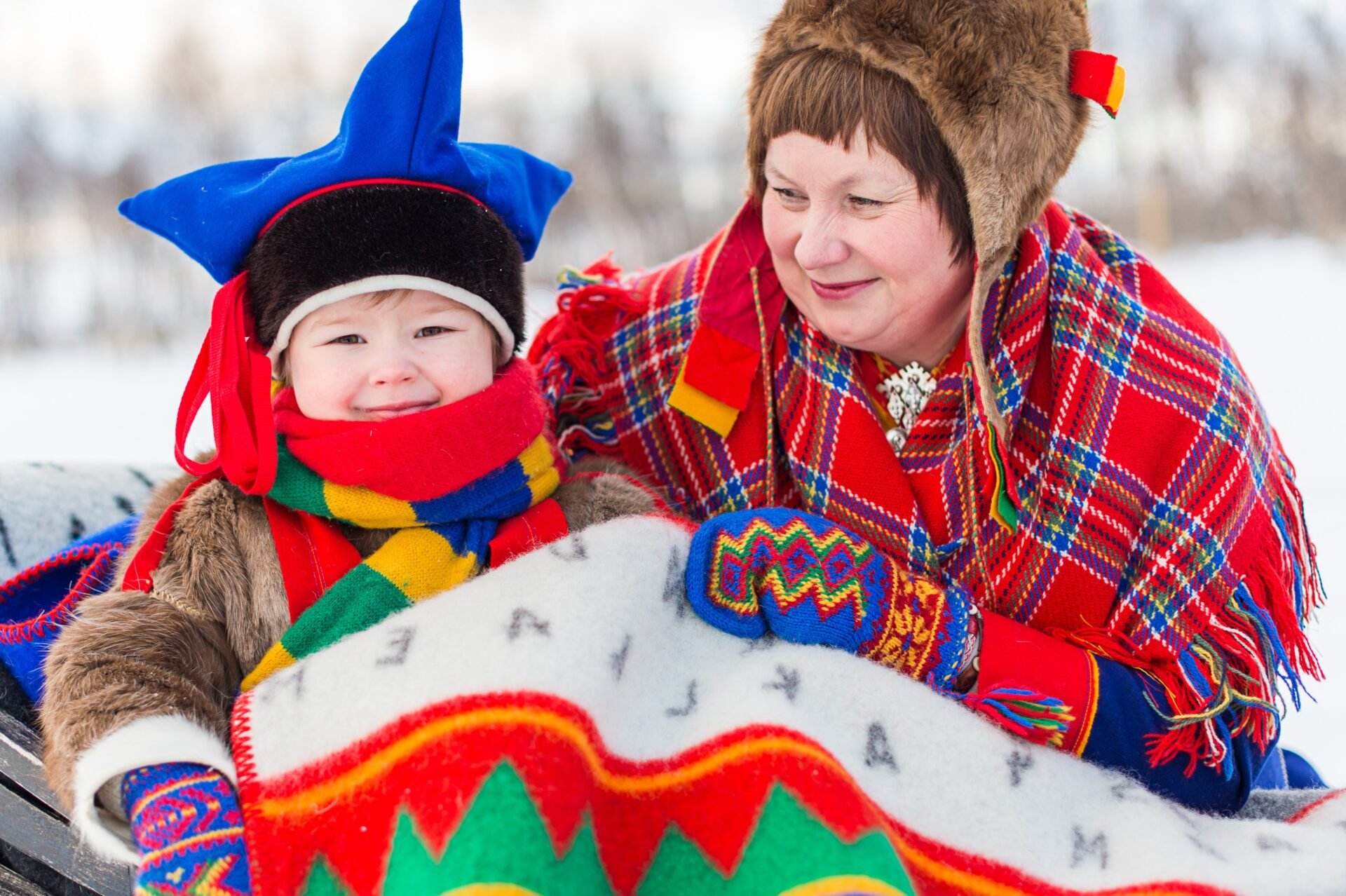
How to experience it yourself
Join our Northern Lights Cruise from Tromsø and enjoy a peaceful, comfortable way to see the Northern Lights in Norway – as the aurora dances across the Arctic sky and reflects in the fjords.
